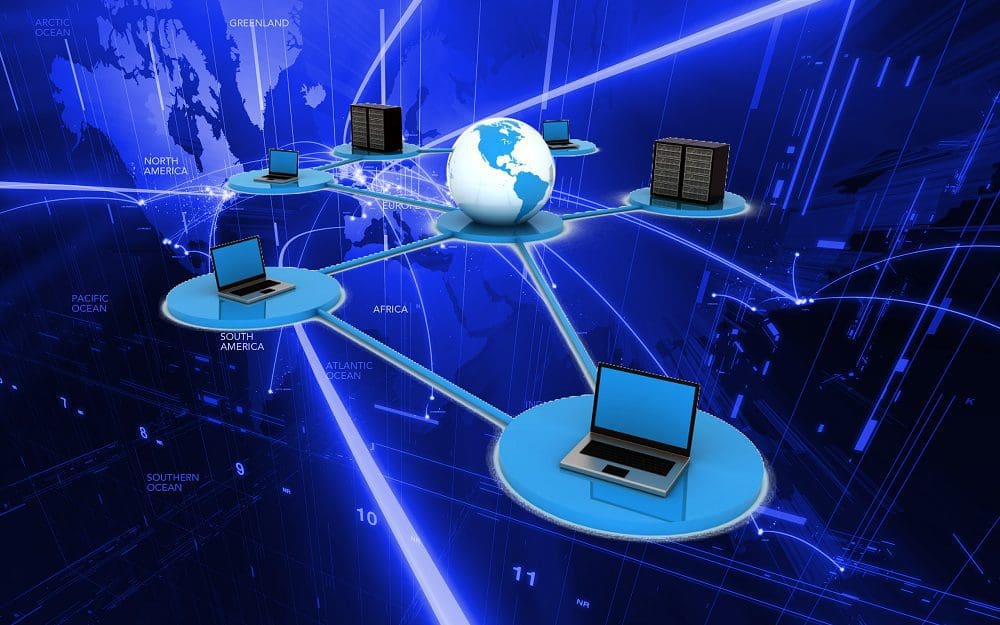The Enhanced Interior Gateway Routing Protocol, or EIGRP, is an advanced routing protocol used in computer networks. It’s used for automatic routing decisions not directly controlled by a controller. Initially, the protocol was proprietary to Cisco and only available on their routers. As of 2013, it was made publicly available in limited forms.
However, it is still not fully available to other providers, making interoperability tricky in networks with hardware from different vendors. EIGRP is a direct improvement on and replacement of its predecessor, IGRP, or Interior Gateway Routing Protocol. It was developed and implemented in 1993. One of the significant upgrades in EIGRP was support for CIDR. IGRP was limited to classful routing and became obsolete when CIDR was standardized.
What Does It Do?
When correctly implemented, the EIGRP is used on a router to share routes with other routers on the same autonomous system. Unlike other protocols that do the same thing, EIGRP sends occasional updates when necessary rather than constantly running a stream of data between all points. This significantly decreases the workload on the network and router and stops wasteful data transmissions that can be better used for other tasks. In summary, the EIGRP offers more efficient and cost-saving ways of updating routers on available routes between them all.
Tip: The aforementioned autonomous system here refers to a class of networks that comprise the larger internet. An independent system or AS describes an extensive network or group of smaller networks that share the same routing policy. Every computer with an Internet connection is connected to some AS. Think of it like a post office – regardless of where you end up receiving a letter (your home), it needs to pass through a post office to be sorted.
You know it has been sorted when you receive it, but you don’t necessarily know where it has been handled or sorted on the way there. Usually, an AS is operated by one specific company – for example, an ISP. Sometimes, they belong to governments, businesses, universities, etc., but they function the same and are necessary to connect to the internet.
Why Is It Necessary?
Routers almost always have a routing table that has a list that features all pathways to that data can be transferred. In other words, it’s a list of possible origin and receiving points and the paths between them. It also contains the rules that govern the data transfer – if a transmission is attempted that either violates the rules or tries to go somewhere, no valid path leads. The data and any subsequent traffic to that location are discarded.
If the network changes – say, because a router is disconnected or a new one is added to the network, the rest of the available routers need to be made aware of the changes – otherwise, traffic that should be discarded won’t be. If a new router isn’t registered, traffic can’t be sent to it either. In other words, the routing information must be as accurate and up-to-date as possible. EIGRP detects things like routers disconnecting and becoming unavailable and automatically informs other network members.
Tip: There’s a simple reason EIGRP is so much more efficient at updating routing tables. When there is a change, it doesn’t send the whole table but only updates whatever parts of it need it. Compare it to printing a document with ten pages. If you discover a typo on page 3, you could reprint all ten pages – or only page 3, which needs replacing.
There are no periodic checks that the routing table is still accurate and up to date. A routing update is only shared when a new member in the network has been detected or one has disappeared. Other routing protocols instead tend to push routing updates at regular fixed intervals.
Conclusion
EIGRP stands for Enhanced Interior Gateway Routing Protocol. It is a routing protocol developed by Cisco. Technically it is publicly usable. However, published documentation is incomplete, making compatibility with network hardware from other manufacturers tricky. EIGRP is well regarded as one of the most scalable routing protocols due to its update paradigm.
Rather than pushing an updated routing table to all devices for each change, only actual differences are pushed. This significantly reduces the processing and network traffic load due to the routing protocol. This is especially useful in extensive and complex networks.



